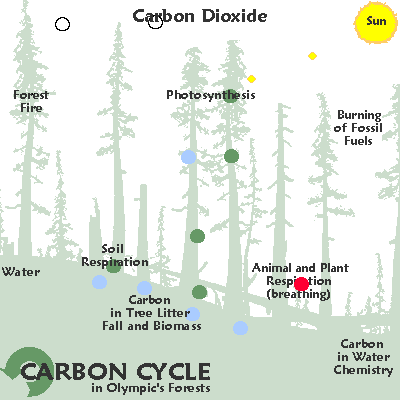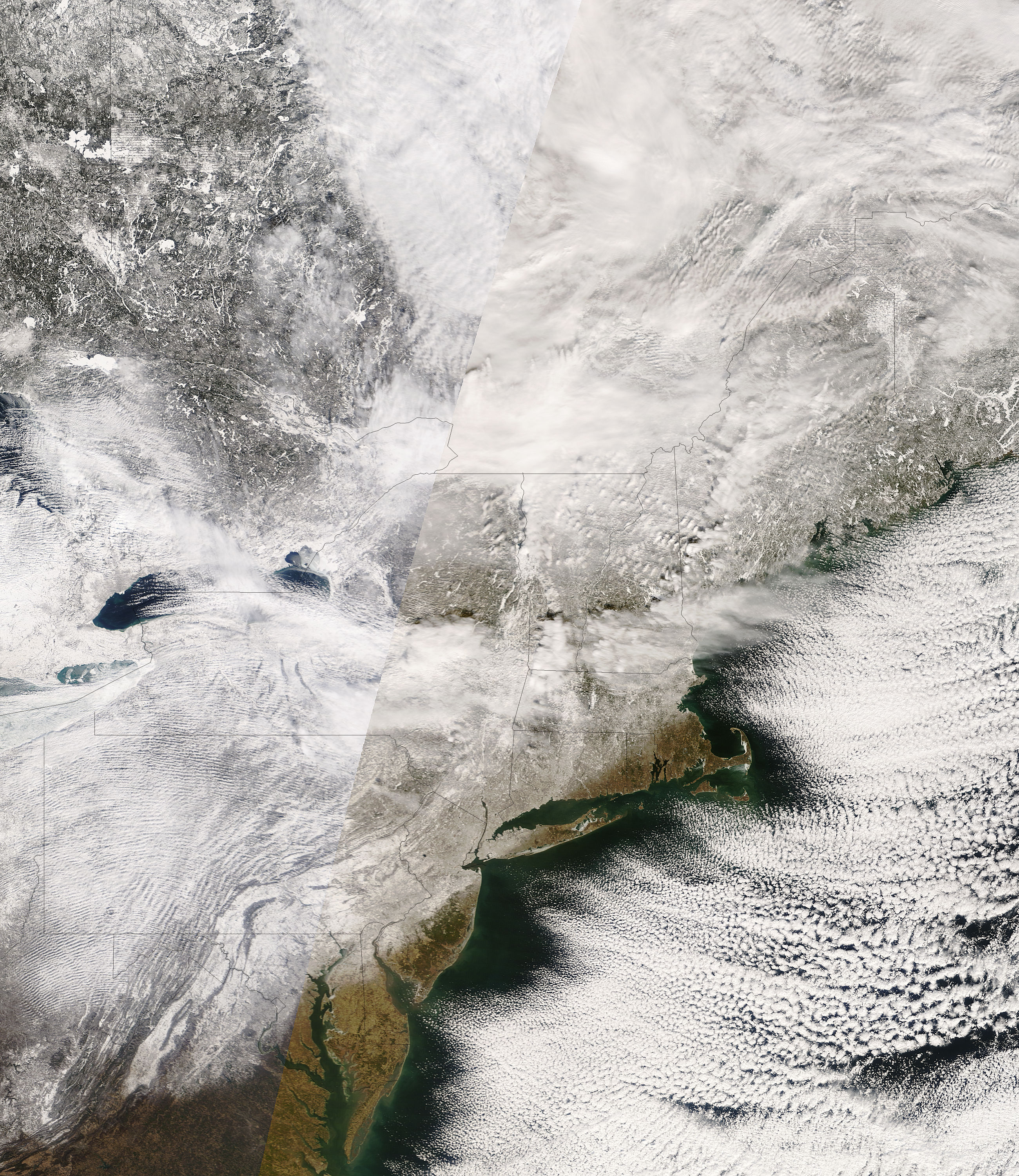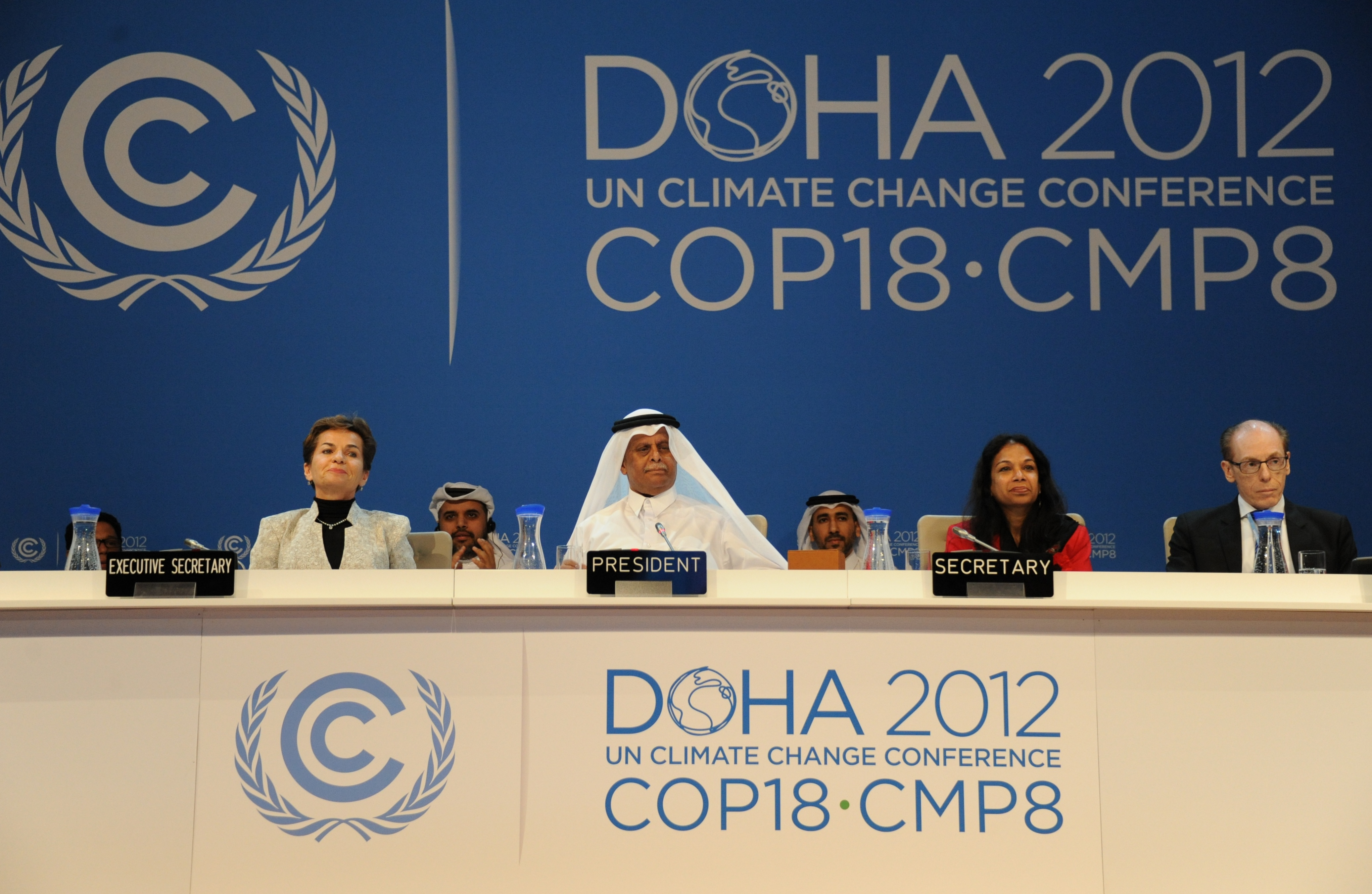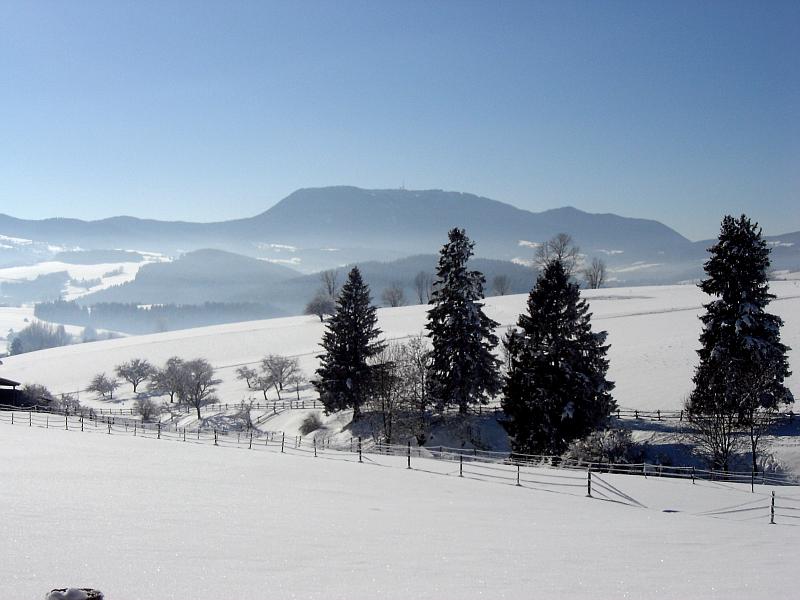
Since trees are large
carbon storage vessels, incorporating forests into GHG emission reduction platforms has been promoted as a method that serves additional conservation and preservation benefits. In general, when forests are valued for their ability to sequester and store carbon, they often are
more valuable left standing than harvested and processed, particularly in tropical areas where carbon storage can be great. As a result, forest land-owners have been particularly involved in trying to obtain funding for the carbon sequestration capabilities and climatic benefits of their trees. While such payments-for-ecosystem-service mechanisms involving forests do not exist in the Kyoto Protocol currently, similar transactions have been incorporated into other emissions reductions agreements (i.e. the California Environmental Protection Agency's Air Resources Board
Compliance Offset Program).
Ecosystems such as forests also provide additional climatic benefits than through carbon sequestration and storage, however.
Albedo is described as a unit-less index ranging from zero to one which describes how well a surface can reflect incoming radiation. Ground that is covered by snow is highly reflective and has an albedo that approaches a value of 1.0. A dark surface, such as a Spruce forest, often has a lower value of albedo, approaching 0.10. When incoming solar energy in the form of
ultraviolet light hits the Earth's surface, it is either reflected back into space, or is absorbed and re-emitted as heat which is trapped by the greenhouse layer. Thus, brighter and more reflective surfaces, such as snowy ground and sea ice cover, help provide climate-mitigation services.
 |
| The White Mountain National Forest, New Hampshire |
Forests in northern latitudes which receive snow regularly throughout the winter therefore provide two different climate-regulating ecosystem services: carbon storage and albedo reflectance. Our recent research for the
New Hampshire EPSCoR project examines forests in the
White Mountain National Forest and these benefits in the context of different management strategies and economic values. Primarily, we were interested to see what happens when the benefits of albedo were valued, since in all climate mitigation platforms forests are solely valued for their carbon storage. Forest albedo benefits are realized when forests are cut and snow is allowed to accumulate on bare ground, whereas carbon benefits are realized through the growth of forest trees. Therefore, when both of these services are valued, there are tradeoffs that may occur by harvesting trees at different times. This information is very important for future planning of forests in New Hampshire in the new era of climate mitigation.
 |
| Snowfall as viewed by the MODIS sensor |
Figuring out how these properties of services and the economics balanced out required the extensive use of computer models. Using a model of the world's economy called
DICE, which is classified as an integrated assessment model of the climate and the economy, we calculated the potential climatic damages on the economy due to climate change. We were able to construct
shadow prices for both carbon storage as well as the energy that is reflected through albedo. We then used these prices to determine the total revenue streams by simulating the growth of forests in a computer model. We simulated albedo over time by looking at historical measurements of albedo taken by NASA's
MODIS instrument which flies on board two satellites and takes images of the Earth continuously.
 |
| High altitude spruce-fir forests in the White Mountains |
The results of this research indicate that the climatic benefits of albedo are quite important. When only carbon and the revenue provided by timber harvest are considered, most forests in the White Mountains should be maintained standing, with infrequent
harvest. However, when there is an economic value for albedo, the benefits of harvest become more significant. In some
high-altitude spruce-fir forests the albedo effect is so valuable that it is most economical to harvest trees frequently so as to maximize the climatic benefits of albedo. Although our project has only looked at a small area within the White Mountains, we intend to expand this analysis throughout the state. This will provide us with a guide as to the management strategies that may provide the biggest economic and climatic benefits of our forests. Future work on this research will also incorporate the influence of climate change on the quantity and timing of snowfall, and how that may influence management in the context of albedo.
Posted by David Lutz, Research Associate,
Environmental Studies Program, Dartmouth College

 Since trees are large carbon storage vessels, incorporating forests into GHG emission reduction platforms has been promoted as a method that serves additional conservation and preservation benefits. In general, when forests are valued for their ability to sequester and store carbon, they often are more valuable left standing than harvested and processed, particularly in tropical areas where carbon storage can be great. As a result, forest land-owners have been particularly involved in trying to obtain funding for the carbon sequestration capabilities and climatic benefits of their trees. While such payments-for-ecosystem-service mechanisms involving forests do not exist in the Kyoto Protocol currently, similar transactions have been incorporated into other emissions reductions agreements (i.e. the California Environmental Protection Agency's Air Resources Board Compliance Offset Program).
Since trees are large carbon storage vessels, incorporating forests into GHG emission reduction platforms has been promoted as a method that serves additional conservation and preservation benefits. In general, when forests are valued for their ability to sequester and store carbon, they often are more valuable left standing than harvested and processed, particularly in tropical areas where carbon storage can be great. As a result, forest land-owners have been particularly involved in trying to obtain funding for the carbon sequestration capabilities and climatic benefits of their trees. While such payments-for-ecosystem-service mechanisms involving forests do not exist in the Kyoto Protocol currently, similar transactions have been incorporated into other emissions reductions agreements (i.e. the California Environmental Protection Agency's Air Resources Board Compliance Offset Program).



No comments:
Post a Comment